Share this article
The top 10 list of the world’s biggest websites can vary depending on who you ask and what measure is being used.
The list is, obviously, a fluid one and therefore subject to change.
In terms of web traffic, here are the 10 that consistently rank in 2022:
1 – Google
2 – YouTube
3 – Facebook
4 – Twitter
5 – Wikipedia
6 – Baidu
7 – Yahoo!
8 – Yandex
9 – Amazon
10 – Netflix
There’s an argument for Instagram being 6th and WhatsApp in 10th, but again, this depends on who you ask given that both are widely considered to be apps, not websites.
If this blog is going to be a frank one, then adult websites also need to be acknowledged as major global players. They frequently feature in or around the top 10 lists, but again, it depends on which list you’re looking at.
In any case, there’s no debate to be had over what the world’s number one website is, it has comfortably occupied the top spot since September 2010.
The early days of the information superhighway
In March 1989, Tim Berners-Lee gave managers at CERN a proposal for an information management system that used hypertext to link documents on different computers that were connected to the internet.
Labelled “vague but exciting” by his boss, the proposal wasn’t accepted at first.
Berners-Lee teamed up with Robert Cailliau, a Belgian engineer at CERN, to refine the proposal.
After originally calling the project Information Management, Berners-Lee tried out names such as Mine of Information and Information Mesh before settling on WorldWideWeb.
By the end of 1990, Berners-Lee, (using a NeXT computer designed by Steve Jobs – making it the world’s first ever web server), had developed the key technologies that are the bedrock of the web, including Hypertext Markup Language (HTML) for creating web pages, Hypertext Transfer Protocol (HTTP) – a set of rules for transferring data across the web and Uniform Resource Locators (URLs) – web addresses for finding a document or page.
He also had devised a basic browser and web server software.
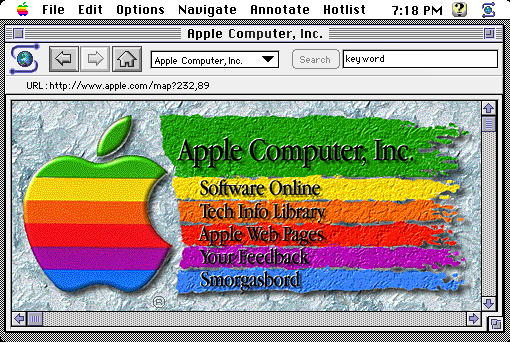
The very first modern search engine
Despite the ‘WorldWideWeb’ being publicly available since 1990, the first search engine didn’t arrive until 12th December 1993.
In the early 90’s, if you didn’t know the address of the next website that you wished to visit, then to continue ‘surfing’, most websites had a ‘links’ section with a manual index of sources of similar information recomended by the webmaster.
Hosted at the University of Sterling, JumpStation is recognised as the first modern search engine.
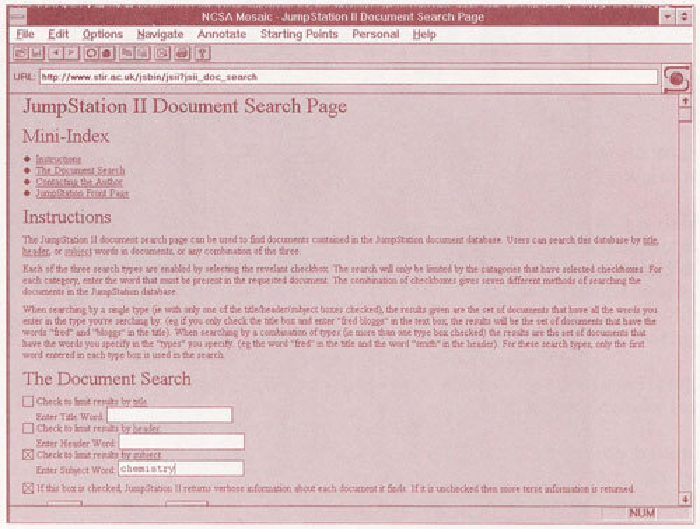
Early algorithms for ranking keywords and phrases were simple and not very efficient.
Webmasters would use a ‘spider’ to crawl a webpage and index the content, it would then be ranked according to the words and phrases that were used.
If your website had a blog, you could insert keywords and phrases related to whatever was popular at the time and expect to see a boost in traffic regardless of what your site was about. Site traffic was the objective, quality of content was not.
Many search engines were showing spam sites in the results.
Hiding white text on a white background to get keywords on a page worked at the time, meaning typically poor search results because webmasters were spamming the system.
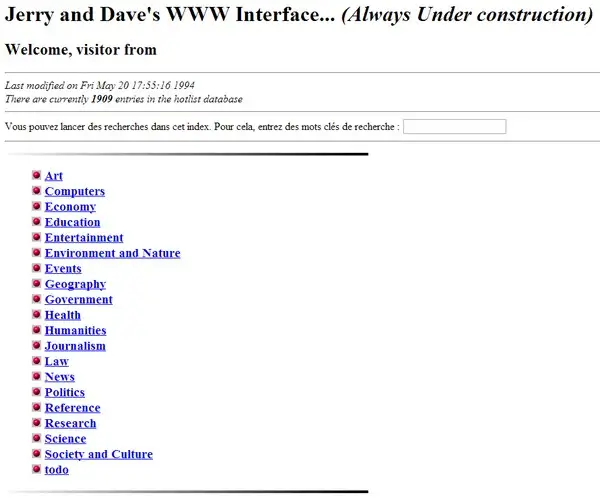
PageRank
Fast forward to 1996, the internet landscape was dominated by AOL, Yahoo!, Geocities, Netscape, MSN, Excite, Webcrawler, Lycos, Infoseek, Primenet and Compuserve.
That year, Google was founded when Larry Page and Sergei Brin were Ph.D. students at Stanford University in California.
In its early days, the Google search engine was called ‘Backrub’ because the algorithm estimated the importance of sites by crawling backlinks. They called this algorithm PageRank (named after Larry).
The established search engines ranked results by counting how many times the search term(s) appeared on the page.
Backrub search results were different because they were based on linking behavior. This meant that the more popular sites rose to the top of the list, the less popular sites fell to the bottom.
They released the first version of Google on the Stanford University website – google.stanford.edu – in August of 1996.
The original homepage had a simple design because Page and Brin had little experience in HTML.
The Backrub crawler used nearly half of Stanford’s entire network bandwidth and on at least one occasion, the project brought down Stanford’s internet connection!
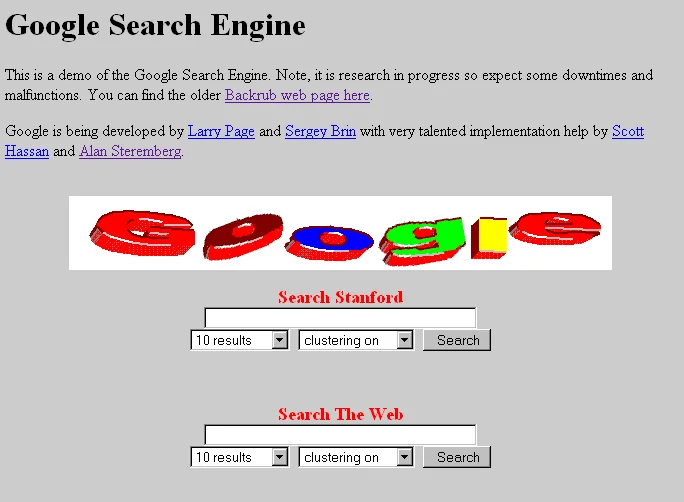
The name
In 1920, an American mathematician named Edward Kasner asked his nephew Milton Sirotta to help him come up with a name for the number 1 followed by 100 zeroes. The name ‘googol’ was the result.
When Page and Brin were looking to name their company, they decided on the word Googol to signify the mission to “organise the world’s information and make it universally accessible and useful.”.
However, they decided to modify it by losing the ‘o’ between ‘g’ and ‘l’ and adding an ‘e’ after the ‘l’.
In years to come, as the use of Google increased, the word became a verb.
Modern SEO is invented
Put simply, PageRank was a way for the importance of a webpage to be measured by analysing the quantity and quality of the links pointing to it.
The first PageRank patent was filed on 1st September 1998. They didn’t realise it at the time, but Page and Brin had invented the concept of modern Search Engine Optimisation (SEO).
PageRank evolved to look at multiple factors including the words of a query, relevance, usability of pages, expertise of sources, location and settings. The freshness of the content also became a significant factor.
Millions of webmasters could no longer buy links, ‘keyword stuff’ or use hidden text – they had to start understanding the concept of this new metric.
Page and Brin knew that they needed to provide their own resources and stop using Stanford’s. Starting a company became the only viable option and Google Inc. was officially born.
The company was incorporated on 4th September 1998 with Page as CEO and Brin as President. The domain name www.google.com was registered on 15th September 1997.
After moving out of their dorm rooms, their first office was based in the garage of Susan Wojcicki – Google’s first marketing manager – in Menlo Park, California (they eventually outgrew the garage and moved to their current headquarters, known as ‘The Googleplex’, in Mountain View, California).
The world’s biggest website
That’s how modern SEO was invented. The rest, as they say, is history.
Google became the world’s biggest website in June 2006. It dropped back to second place (with Yahoo! in first) in September 2008 but regained the top spot in September 2010 where it has remained since.
In June 2011, Google introduced ‘Google Voice Search’ to search for spoken, rather than typed, words.
In May 2018, Google-owned YouTube became the world’s second biggest website.
Google still uses PageRank as part of its algorithm, but the original patent has expired.
PageRank hasn’t actually been used in its original form since 2006 and the algorithm is now a far more sophisticated one that uses machine learning.
In 2022, backlinks remain one of Google’s top three ranking factors alongside content and RankBrain.
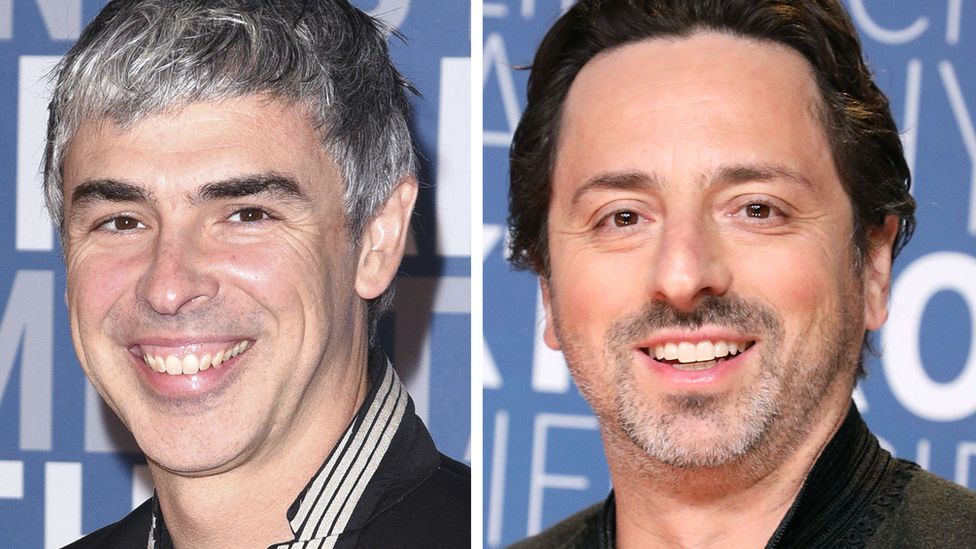
Present day
In October 2015, a restructuring meant that Alphabet Inc became the parent company of Google.
Page and Brin remained as controlling shareholders, board members and employees.
By market cap as of March 2022, their dorm room project is now the world’s forth-largest company behind only Apple ($2.6 trillion), Aramco ($2.4 trillion) and Microsoft ($2.1 trillion). Alphabet has to make-do with a mere $1.7 trillion according to TradingView.
Google’s offering now goes way beyond its search engine, from YouTube, Maps and Android to Gmail, Drive and the biggest browser, Chrome to name but a few of its famous products.
However, Google’s biggest contribution to the world may still be yet to come. Go to google.co.uk and search ‘Waymo’.
Click HERE to check out the search engine optimisation (SEO) services on offer from PageNorth Digital.